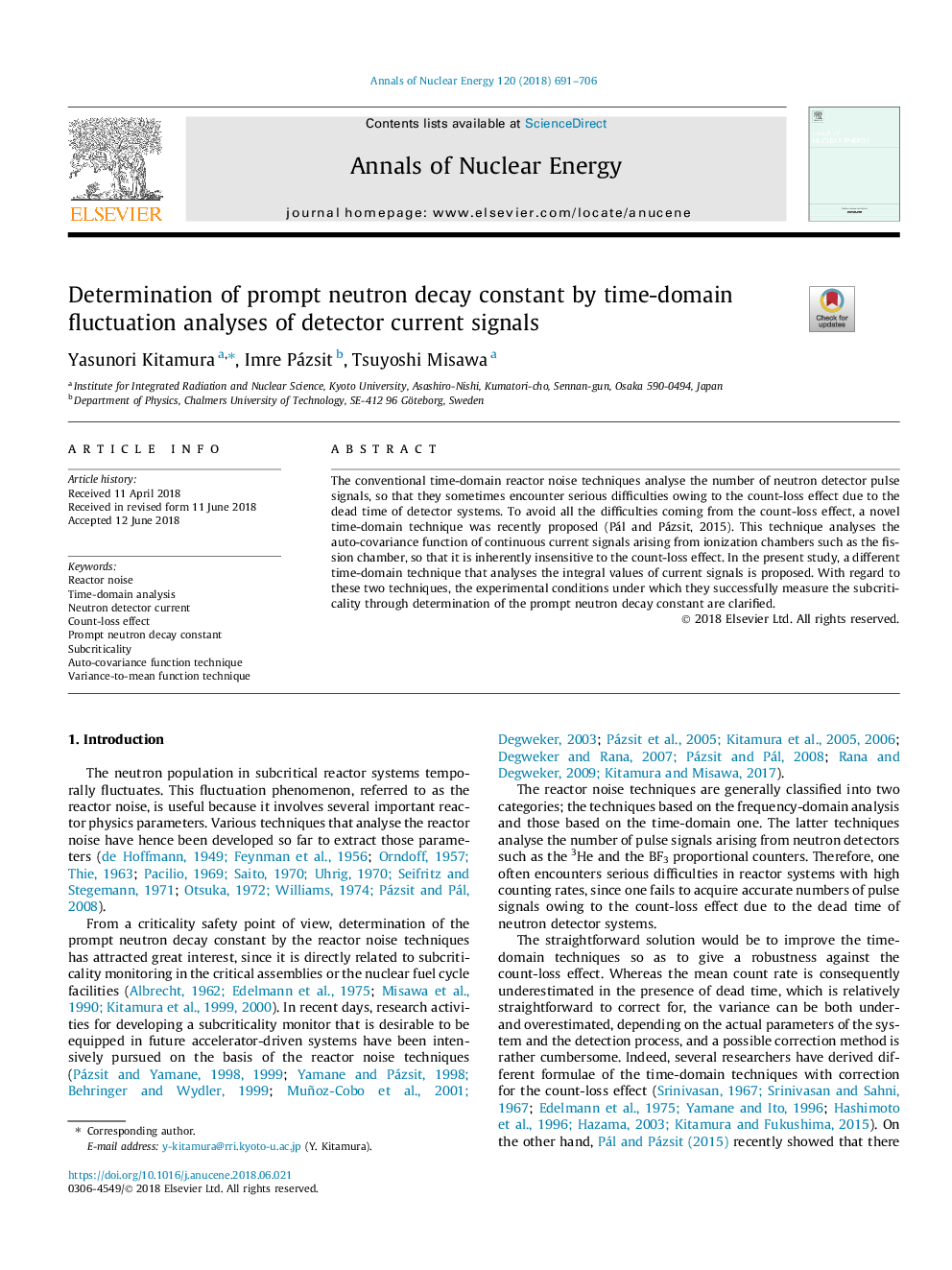| Article ID | Journal | Published Year | Pages | File Type |
|---|---|---|---|---|
| 8066879 | Annals of Nuclear Energy | 2018 | 16 Pages |
Abstract
The conventional time-domain reactor noise techniques analyse the number of neutron detector pulse signals, so that they sometimes encounter serious difficulties owing to the count-loss effect due to the dead time of detector systems. To avoid all the difficulties coming from the count-loss effect, a novel time-domain technique was recently proposed (Pál and Pázsit, 2015). This technique analyses the auto-covariance function of continuous current signals arising from ionization chambers such as the fission chamber, so that it is inherently insensitive to the count-loss effect. In the present study, a different time-domain technique that analyses the integral values of current signals is proposed. With regard to these two techniques, the experimental conditions under which they successfully measure the subcriticality through determination of the prompt neutron decay constant are clarified.
Related Topics
Physical Sciences and Engineering
Energy
Energy Engineering and Power Technology
Authors
Yasunori Kitamura, Imre Pázsit, Tsuyoshi Misawa,
